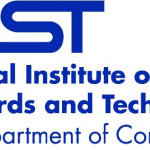- Industrie: Technology
- Number of terms: 2742
- Number of blossaries: 0
- Company Profile:
The National Institute of Standards and Technology (NIST) — known between 1901 and 1988 as the National Bureau of Standards (NBS) — is a measurement standards laboratory and a non-regulatory agency of the United States Department of Commerce. The institute's official mission is to promote U.S. ...
A heap made of a forest of trees. The amortized cost of the operations create, insert a value, decrease a value, find minimum, and merge or join (meld) two heaps, is a constant Θ(1). The delete operation takes O(log n).
Industry:Computer science
A heap, implemented in an array, adjacent to an unordered table. The shadow is the table nodes and all their (recursive) parents, by array index, in the heap.
Industry:Computer science
A height-balanced tree which is also a binary search tree. It supports membership, insert, and delete operations in time logarithmic in the number of nodes in the tree.
Industry:Computer science
A heuristic test for prime numbers. It repeatedly checks if the number being tested, n, is pseudoprime to a randomly chosen base, a, and there are only trivial square roots of 1, modulo n. In other words, n is surely composite if a<sup>n-1</sup> ≠ 1 (mod n), where 0 < a < n. Some composites may be incorrectly judged to be prime.
For k repetitions, the chance of incorrectly judging an odd integer greater than 2 to be prime is 2<sup>-k</sup>. For randomly chosen large integers, a small number of repetitions, say 3, is enough.
Industry:Computer science
A heuristic that keeps the elements of a list ordered by number of times each element is the target of a search.
Industry:Computer science
A heuristic that moves the target of a search to the head of a list so it is found faster next time.
Industry:Computer science
A heuristic that moves the target of a search to the root of the search tree so it is found faster next time.
Industry:Computer science
A Karp reduction that preserves approximation properties of optimization problems.
Industry:Computer science
A k-way merge sort in which the number of input and output data streams is different for any particular pass. Typically P input streams are merged and distributed to T output streams on one pass followed by a merge of the T inputs and distribution to P outputs.
Industry:Computer science
A k-way merge sort in which the number of input and output data streams is the same.
Industry:Computer science
